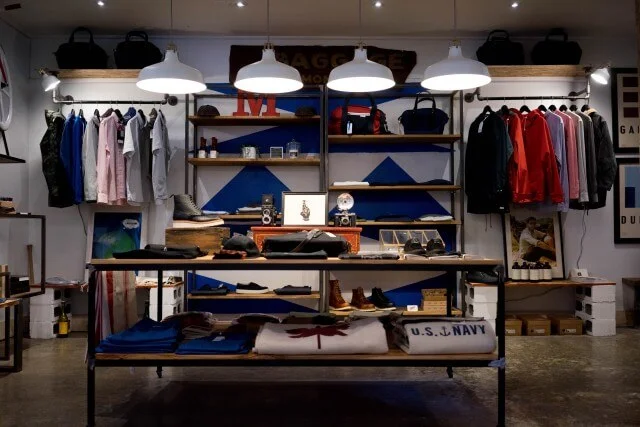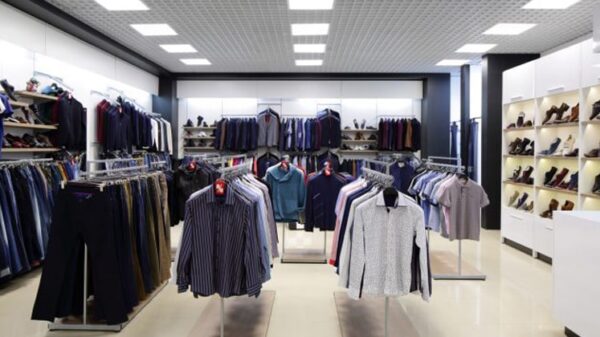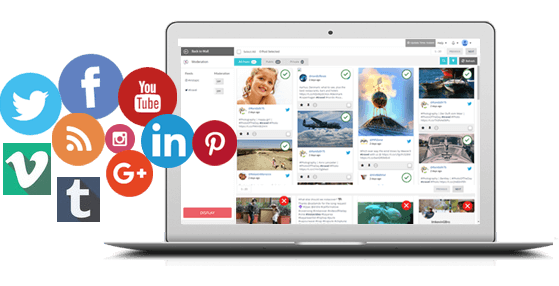The Importance of eCommerce to the Fashion and Apparel Industry

The Importance of eCommerce to the Fashion and Apparel Industry
Online sales are a component of many businesses that are expanding quickly. But few sectors use e-commerce as extensively as the fashion sector.
Online sales are being driven ahead by burgeoning retailers, who are placing increasing demands.
What benefits does this offer, though, to both customers and retailers? And how vital is eCommerce to the fashion industry?

Overview of fashion e-commerce in general
More consumers than ever shop for clothing from internet merchants. These individuals are generating significant amounts of money, which has enabled firms to expand and is now essential to their success.
According to statistics, e-commerce has become a crucial instrument for the fashion sector. The industry earned $481 billion in total revenue in 2018. This figure increased to $545 billion in 2019 and is anticipated to reach $713 billion by 2022.
The steady increase in revenue is partially attributable to the growth of potential customers. By 2020, an additional 1.2 billion consumers are anticipated, with the majority of them falling between the ages of 16 and 35.
The expansion of numerous garment segments aids fashion eCommerce. In several of them, growth is slowing down, but the expectations are still optimistic.
The accessories and bags sector, which increased by a sizable 15.6 per cent in 2018 and is expected to continue growing by 8.7 per cent by 2022, is the strongest of those segments.
Here are a few other figures to consider that have aided in the expansion of e-commerce in the fashion sector:
- 43 per cent of purchases are made after personalised recommendations (via advertisements)
- 75 per cent of consumers brands personalise messages, offers, and products
- China spent $740 billion on e-commerce in 2019, making it the country with the highest spending rates. Over what was spent in the USA, that represents an increase of $179 billion (the second largest market).
- In South Korea, 77% of individuals purchased clothing online in 2019. Any country has the most with that.
Characteristics of the industry
A range of characteristics showcases fashion eCommerce. These include:
- Presentation – An e-commerce website’s design is essential to its success. It must stand out in addition to being simple to read and utilise.
- Outstanding customer service – Many of the top online businesses combine promotions and customer service. Tying them together ties consumers to the brand and fosters enduring brand loyalty.
- Loyalty schemes- the most direct means of fostering brand loyalty. Reward loyal consumers by giving them something extra. Nearly every eCommerce-based firm advertises loyalty programmes.
- Alternative marketplace – The major businesses typically offer additional methods to purchase their products, whether through eBay, Facebook Marketplace, Amazon, Bol or elsewhere.
- Live chat – A convenient approach for customers with questions to contact a business.
- Automation – It is possible to complete the process without speaking to anyone else. Purchases can be made with just a few clicks.
What are fashion shoppers looking for?
Fashion shoppers are looking to take advantage of the new opportunities online purchasing gives them. Buyers are impacted by various variables that cause them to prefer the online experience, whether through the ability to personalise things or navigating a straightforward interface on mobile devices.
-
Personalisation
Online buyers frequently value personalised offers. Many clients will compare prices from several vendors. However, if a promotion is personalised to the individual, such as a birthday discount, the client is more inclined to patronise that store.
Similar results can be achieved with personalised items by delivering distinctive goods and luring clients away from the competitors.
-
Reviews: building long-lasting trust
More than 98 per cent of consumers who purchase clothing acknowledged the value of reviews. Customers wanted an unbiased opinion of the goods they were considering purchasing, which is why this happened. Reviews, however, were thought to be less significant when purchasing from reputable online stores with generous return policies.
-
Customised results: great filtering systems
Lastly, fashion buyers frequently expect to promptly find the item they’re looking for. An online store interface also benefits from a simple and efficient filter system.
The most effective filtering makes it simple for buyers to navigate to different sections of an online clothing business (for instance, “striped shirts > blue striped shirts”). This enables clients to enjoy their browsing experience while discovering goods that are comparable to those they searched for. Fashion buyers can filter for themselves through a variety of outlets.
The Facebook Marketplace is a terrific illustration of how significant customising has grown among online customers. It provides tailored outcomes, and its monthly growth is increasing by 77%. Additionally, this is just one of many pertinent examples.

Best practices for apparel sellers
-
Social media presence
It’s crucial to establish a good social media presence. Each platform has advantages and disadvantages of its own, and some platforms might work better for particular brands than others.
Instagram is the most powerful medium for fashion e-commerce, with garment brands averaging 13.71 engagements per 1000 followers.
This is significantly more than the following two platforms, LinkedIn (1.12 interactions per 1000 users) and Pinterest (0.49). Instagram’s straightforward layout highlights images.
As a result, fashion shops can sell their products based on their key features, style, and appearance.
On Instagram, collaboration with influencers is the most popular promotional strategy. Influencers may occasionally be well-known people.
On the other hand, fashion brands frequently employ less well-known influencers with large followings. The purpose of this is to create a connection between a company and potential customers and to have a person who is easily relatable promote a brand’s goods.
Along with Instagram, most brands will use multiple other social media sites. Typically, these include Snapchat, Facebook, Twitter, and Pinterest.
Although each of these networks has unique advantages, they are typically utilised in conjunction with Instagram or one another to increase interaction in the fashion business.
The benefit of Facebook is that it enables online clothing retailers to promote to particular demographics. Thus, viewers of the advertisements are more likely to be interested in what they see.
With 2.38 billion active users, Facebook is not just the most effective social media platform for demographic targeting, but it is also the most widely used.
Brands can benefit more from a Facebook advertisement than they can from any other form of advertising due to the massive volume of Facebook users. Facebook advertising can occasionally be intrusive, and users may choose to ignore it.
Like Facebook, Twitter engages users through demographic and geographic targeting ads. Twitter can have advertisements in-stream rather than off to the side.
This implies that users will see advertisements when they navigate through their feed or trends. In addition to understanding who isn’t interested in their advertisement, this enables fashion firms to increase the reaction to their advertising.
Additionally, it implies that, unlike on other platforms where they can be overlooked, companies can simply create engagement with polls that most people will participate in.
All social media platforms, when used properly, can be highly beneficial to clothing brands. It may support engagement, acquire customer information, and foster enduring brand loyalty. All of this works to both short-term and long-term improve brand positioning.
The calibre of the data retailers provide to those platforms is crucial behind the scenes. Because the adverts are better aligned with the user’s interests, etc., optimised data feed greatly increases the possibilities of grabbing the buyer’s attention.
-
Website appearance
One of the most crucial aspects of any online business is the website’s appearance. Customers base their first impression of a brand on this.
A poorly designed website may result in reduced sales and one-time visitors. Because of these factors, online fashion retailers consider how they seem online. The following are some of the critical areas to concentrate on for a successful e-commerce website:
• A simple easy to navigate homepage
• Clear, and concise information on the critical areas of the business (delivery process, types of products, etc.);
• Clear colour scheme – should relate to the brand;
• The website should be effective and quick; even if it looks amazing, customers will give up and shop elsewhere if it takes a long time to load on some platforms.
Best ways to communicate with customers
There are a few alternatives open to e-commerce organisations when it comes to consumer communication. These consist of:
- Live Chat – A quick and easy way to communicate with website visitors. Suitable for quickly resolving specific issues throughout business hours.
- Email – This method best informs clients about orders and keeps them abreast of sales and fashion trends. The response time for inquiries is slower than that of Live Chat.
- Phone – Faster and more personal than Live Chat for resolving concerns.
- Social media – You may establish a long-lasting relationship with customers by participating in their everyday social lives and earning their trust. This is a quick and personable method of getting in touch with customers and handling any problems. Thanks to familiarity built with social media presence, you can announce promotions and new releases.

The most effective ways to boost sales
Targeting existing, devoted clients would be one of the most successful approaches to increasing online sales in the fashion industry.
Offering frequent personalised incentives will encourage clients to purchase their products from the same brand. Loyalty programmes, birthday discounts, and even newsletters promoting new features are popular methods to accomplish this.
Making shopping easier for devoted customers is another approach to increase sales. This can be accomplished by improving the store’s usability on other platforms, such as apps.
Instead, it has been demonstrated that offering more and simpler payment choices helps sales.
Offering relevant products to current events is another way to draw in clients. Simply by launching an environmentally friendly assortment of their produce, ASOS recently improved sales from existing and new customers.
Being one of the first online retailers to offer this option ensured that many existing customers would stick with the company and that new consumers would turn to the retailer first for green products.
The most popular strategies for boosting sales of your current products are going global and extending your reach to sell through more channels. Go multichannel and try to reach more people in your market.
Your items will reach a wider audience if you diversify into additional regions and cultural groupings.
Optimising and improving sales
Selling via many channels is necessary if you want to sell online on a large scale.
If you are in the fashion or clothing industry, the following channels are the greatest to use right now:
- Google Shopping – Since Google is frequently the first place consumers look, it is a wise choice.
- Amazon Market – a well-liked option is having a large selection of superior goods. Many people’s first point of inquiry. Aside from prior purchases and viewed products, Amazon also makes product recommendations.
- Facebook Marketplace – Facebook shows people only the products they are interested in or like. Consequently, you have a greater chance of reaching your intended audience.
- Instagram- Instagram, with its targeted audience and emphasis on product photographs, is an excellent choice for online fashion retailers.
- EBAY – EBAY is a further popular first option for consumers seeking clothing, and it again customises the things offered to what you have already seen or bought.
- Local websites – Even if you want to go worldwide, starting local is always a good idea.

The importance of feed quality
When selling clothes through several channels, data feeds are essential. Therefore, having a top-notch data supply is crucial. A quality feed is vital since it gives you an edge over the opposition.
Advantages of a good quality feed include:
• All product information is standardised and kept in one location. This facilitates information use and ensures that data is current across all marketplaces.
• A strong feed will boost your product’s visibility across all channels and encourage more people to view it.
• Using the data gathered, new clients can be attracted, and existing ones may be kept happy.
• Feeds are a quick and easy way to manage all the information.
A data stream can significantly increase sales if it is properly optimised. A product may appear higher and more frequently in marketplaces if its description includes relevant and strategically positioned keywords.
Effective SEO management and interpretation of the data provided will ensure you get the most out of your data feed.
Summary
Being informed is more vital than ever as the world of eCommerce develops astoundingly. Data is, without a doubt, the most effective tool to learn what clients desire.
However, it is crucial to use it to keep current, devoted clients.
The competition between retailers will intensify as eCommerce develops more. Those that manage knowledge in the best possible ways will prosper.
edited and proofread by nikita sharma









